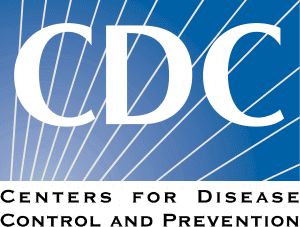- Respiratory Syncytial Virus Vaccine Effectiveness among U.S. Veterans, September, 2023 to March, 2024: A Target Trial Emulation Study
Researchers used electronic health records in the Veterans Health Administration to emulate a target trial comparing a single dose of a recombinant stabilized prefusion F protein RSV vaccine versus no vaccination among veterans aged 60 years and older. They included 146,852 vaccinated individuals matched to 582,936 unique control individuals. The primary outcome was any positive RSV test from day 14 following the matched index date. Secondary outcomes included hospitalization and emergency department or urgent care encounter occurring within one day before or after a positive RSV test. The vaccine effectiveness was estimated as 78·1% (72·6–83·5) any positive RSV test . Among the secondary outcomes, vaccine effectiveness was estimated at 78·7% (72·2–84·8) against RSV-associated emergency department or urgent care encounters, and 80·3% (65·8–90·1) against RSV-associated hospitalization.
- Transcutaneous Vagus Nerve Stimulation Improves Long COVID Symptoms in a Female Cohort: A Pilot Study
Authors write that “Transcutaneous vagus nerve stimulation (t-VNS) has emerged as a promising non-invasive treatment for COVID-19 conditions.” This pilot study assessed the efficacy of t-VNS in 24 female Long COVID patients (45.8 ± 11.7 years old; 20.2 ± 7.1 months since infection), who underwent a 10-day t-VNS intervention at home (30 min/session, twice a day). Cognition was considered the primary outcome, with anxiety, depression, sleep, fatigue, and smell as secondary outcomes. Outcomes were measured at baseline, post-intervention, and one-month follow-up. Significant improvements were observed in various cognitive functions, anxiety, depression, and sleep at post-intervention, with benefits remaining or progressing at one-month follow-up. Improvements in fatigue were delayed, reaching statistical significance at one-month follow-up compared to baseline. In this study treatment was delivered with the Parasym AVNT system (Parasym Health, London, United Kingdom), which was designed specifically for use in this patient population. The electrode was applied to the left tragus of the ear, stimulating the auricular branch of the vagus nerve, with micro-pulses of current. - Distinct Pro-inflammatory/Pro-angiogenetic Signatures Distinguish Children with Long COVID from Controls
Authors performed an extensive protein analysis of blood plasma from pediatric patients younger than 19 years of age Long COVID and a control group of children with acute COVID-19, MIS-C, and healthy controls. Children were classified as Long COVID if symptoms persisted for at least eight weeks since the initial infection, negatively impacted daily life and could not be explained otherwise. 112 children were included in the study, including 34 children fulfilling clinical criteria of Long COVID, 32 acute SARS-CoV-2 infection, 27 MIS-C and 19 healthy controls. Compared with controls, pediatric Long COVID was characterized by higher expression of the proinflammatory and pro-angiogenetic set of chemokines CXCL11, CXCL1, CXCL5, CXCL6, CXCL8, TNFSF11, OSM, STAMBP1a. A Machine Learning model based on proteomic profile was able to identify LC with an accuracy of 0.93, specificity of 0.86 and sensitivity of 0.97. - Persistent Symptoms and Clinical Findings in Adults with Post-acute Sequelae of COVID-19/Post-COVID-19 Syndrome in the Second Year after Acute Infection: A Population-based, Nested Case-control Study
In this German Long-COVID cohort, two thirds (67.6%) of the 982 participants with PCS in phase 1 were considered to have persistent PCS (according to the authors' working definition) after the phase 2 clinical assessment, the authors said. Most of the 32% of Long-COVID patients who reported an improvement at follow-up during phase 2 did not fully recover. - Impact of COVID-19 Pandemic on the Incidence and Prevalence of Postural Orthostatic Tachycardia Syndrome
A rather robust study that looked at a cohort of 65,141,065 patients aged 18 and older across 64 healthcare organizations. Monthly data on incidence rates (IR), incidence cases (IC), and prevalence cases (PC) of POTS were collected from January 2018 to June 2024, with March 1, 2020, defined as the cutoff date for pre- and post-COVID analysis. They report a significant increase in the IR of POTS post-COVID (p < 0.0001), with the IR increasing more than 14-fold.
Situation Dashboards

World Health Organization (WHO)
Novel Coronavirus (COVID-19) Situation from World Health Organization (WHO)

Johns Hopkins University (JHU)
Coronavirus COVID-19 Global Cases by the Center for Systems Science and Engineering (CSSE) at JHU

COVID-19 in US and Canada
1Point3Acres Real-Time Coronavirus (COVID-19) Updates in US and Canada with Credible Sources

Genomic Epidemiology COVID-19
Genomic Epidemiology of (COVID-19) Maintained by the Nextstrain team, enabled by data from GISAID.






